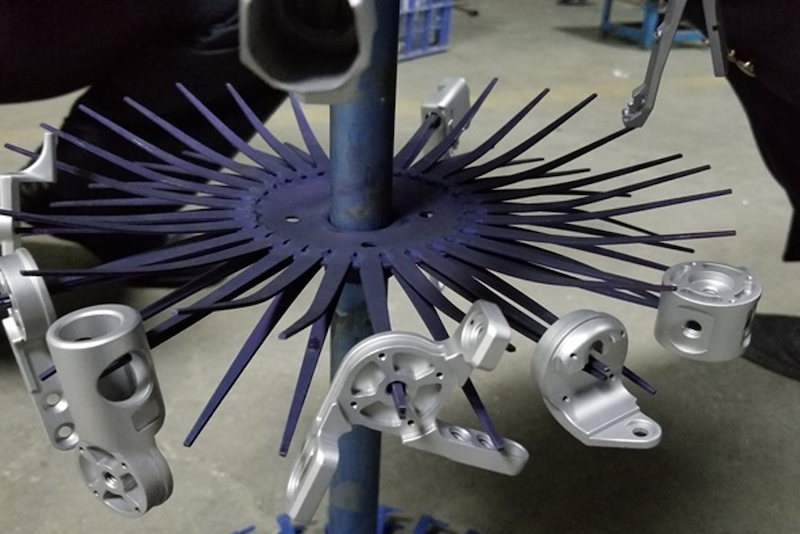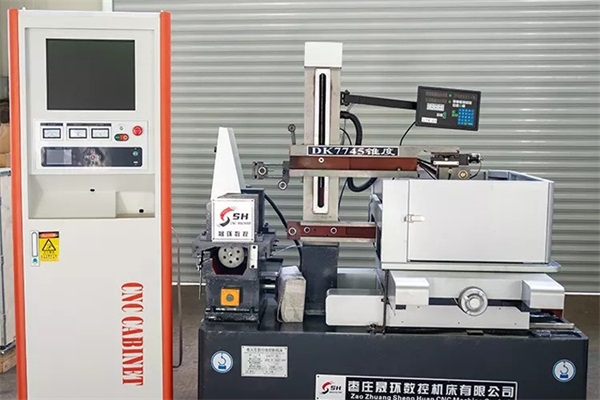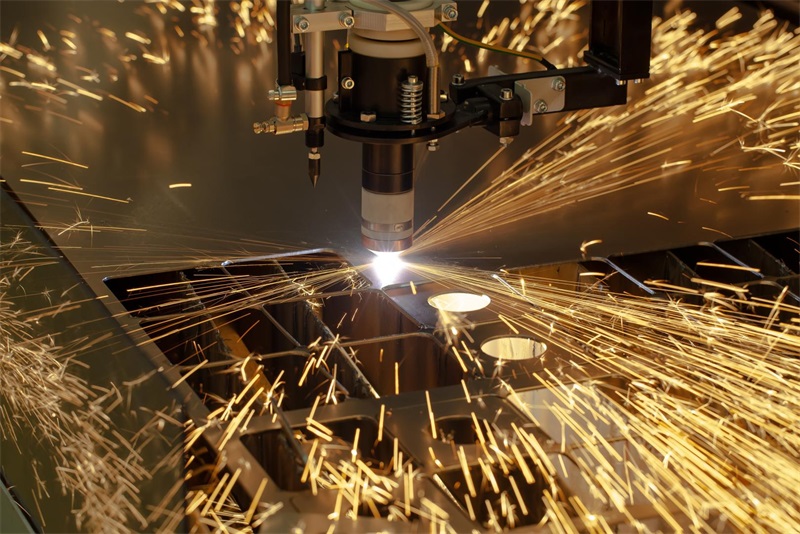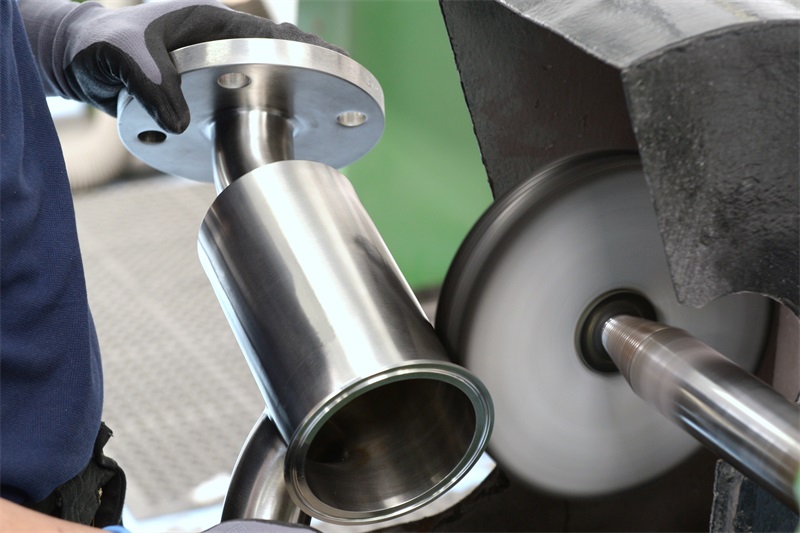Nowadays, metals are commonly seen in our daily life, since they’re robust with lustrous appearance and great properties, making them perfect for various applications. However, they can easily be corroded. So, what can we do to enhance their corrosion resistance? Some metals may get anodized to form a protective oxide coating, which is often adopted for non-ferrous metals like aluminum. But what about ferrous metals such as steel? Can steel be anodized? Let’s find the answer in this article by delving into whether steel is suitable for anodizing and examining why it isn’t widely practiced in industry.
Table of Contents
- 1 What Is Anodizing? Can steel Be Anodized?
- 2 Can Steel Be Anodized?
- 3 Can Steel Be Anodized? – The Process of Steel Anodizing
- 4 Pros & Cons of Steel Anodizing
- 5 Can steel be Anodized?Surface Treatment Alternatives to Steel Anodization
- 6 Steel Anodizing vs Aluminum Anodizing
- 7 Anodizing Metal Parts with TEAM Rapid Tooling
- 8 Can steel be Anodizing? The Conclusion
What Is Anodizing? Can steel Be Anodized?
Anodizing is an electrochemical technique used to enhance the surface characteristics of certain metals by creating a robust and corrosion-resistant oxide coating. This process is predominantly used for non-ferrous metals such as magnesium, aluminum, and titanium. When anodized, the metal serves as the anode within an electrolytic cell, forming an oxide layer on the metal surface by applying a controlled oxidation.
Purpose
It aims to increase corrosion resistance, improve wear resistance, and enhance the appearance of metal appearance. This process is achieved by allowing surface finishes of various colors. In this process, the oxide layer mentioned above plays an integral role in the metal, making it better equipped to endure environmental and mechanical challenges.
Application
You will find it commonly used in aerospace parts, architectural structures, consumer electronics, custom medal, and automotive components, where both durability and visual attractiveness are needed.
Can Steel Be Anodized?
Steel cannot be anodized in the same way as non-ferrous metals like aluminum. Steel, a ferrous alloy, develops a layer of ferrous oxide known as rust when oxidized. Unlike protective oxides, this rust layer corrodes the metal. If you anodize steel with an acidic solution, similar to that used for aluminum, it will worsen rusting rather than prevent it.
Alternatively, steel is usually safeguarded by methods like galvanization, which involves applying a protective zinc layer, or by painting and powder coating. These techniques help inhibit corrosion and prolong the durability of steel items.
Can Steel Be Anodized? – The Process of Steel Anodizing
Anodizing steel is not a common practice, unlike the anodizing aluminum process; however, it can be done through specialized processes in labs. Here’s a general overview of how steel anodizing can be approached:
Can steel be anodized – Pre-Treatment
Pre-treatment is crucial for both steel and aluminum as it greatly influences the final look of the coating. It is important that the steel surface is free of contaminants, oils, and any existing rust. It should be meticulously cleaned and polished, either chemically or abrasively. This process is generally achieved with the use of chemical cleaners or abrasive blasting techniques.
Anodizing should be performed as the last manufacturing step. Thus, it is crucial to complete any drilling or welding operations prior to initiating the anodizing procedure.
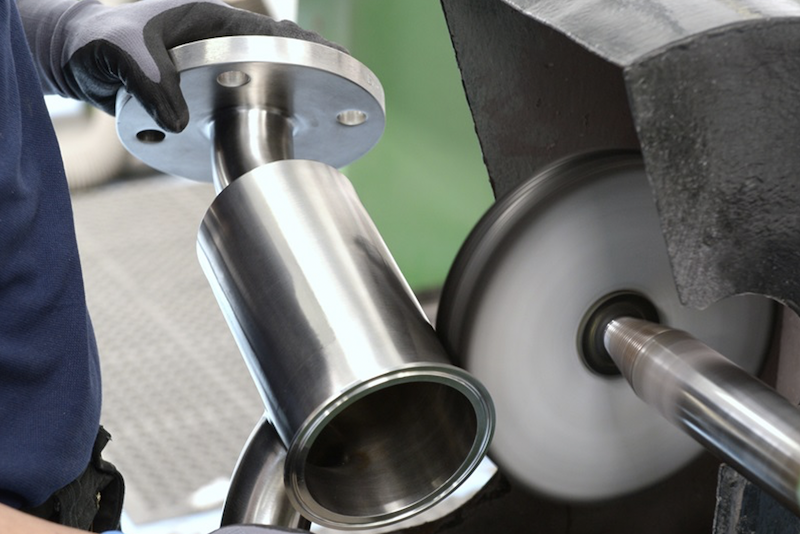
Set up an Electrolytic Cell
To set up an electrolytic cell for steel anodization, a basic medium is required, typically 50% NaOH or KOH solution. Besides, the temperature should be maintained slightly above 70°C with a magnetic stirrer for uniform distribution. In this setup, steel is positioned as the anode within the alkaline electrolyte, with another metal, like aluminum or lead, acting as the cathode.
Can steel be Anodized
The anodizing process starts by applying a high voltage across the electrodes. Gradually, a magnetite layer, which is made of iron and oxygen, forms on the surface. This black magnetite layer will provide protection superior to the common red rust. The layer’s thickness increases with the cube of the submersion time. Increased voltages and temperatures can also speed up the coating process, though the exact settings vary from metal to metal.
Sealing
The anodized layer on steel is porous, which can make it susceptible to corrosion and wear. Therefore, sealing is required to maintain the finish and extend the durability of the coating. This is achieved by submerging the metal in high-temperature de-ionized water to seal the pores.
Pros & Cons of Steel Anodizing
Knowing the advantages and disadvantages helps manufacturers, engineers, and designers make informed choices about whether anodizing is the right process for their specific needs and applications and whether the investment in anodizing will provide a good return, etc.
| Advantages | Potential Issues |
| Enhanced corrosion resistance: Anodized coatings offer enhanced resistance against rust and corrosion. | Increased cost: Due to the high costs of chemicals and the need for a strictly controlled high-temperature environment, anodizing may increase manufacturing costs. |
| Improved wear resistance: The oxide layer is harder and offers greater protection against scratches and wear. | Maintenance requirements: Regular cleaning and maintenance of the anodic oxide might be necessary to preserve its appearance and functionality. |
| Improved aesthetic appeal: Anodizing can produce a variety of colors and finishes, improving the appearance of the product. | Intricate procedure: The steel anodizing entails several stages and demands meticulous regulation of factors like voltage, temperature, and timing, adding complexity to the process. |
| Enhanced electrical insulation: The oxide layer possesses insulating qualities, which make it ideal for use in electrical applications. | Restricted to specific uses: It might not be appropriate for every type of steel or application, thereby restricting its application in certain industries. |
Can steel be Anodized?Surface Treatment Alternatives to Steel Anodization
Steel anodization is not commonly used as a surface treatment because alternatives like passivation, phosphating, electropolishing are more practical.
Passivation
Passivation involves treating the surface of stainless steel with a gentle oxidizing agent (often nitric acid), to remove free iron and other types of contaminants. This treatment helps to create a thin and protective oxide layer that is less reactive and offers more corrosion resistance.
Phosphating
Phosphating involves applying phosphoric acid to steel to create a coating of iron, zinc, or manganese phosphate. This conversion coating is ready for additional coating or painting, while also offering a degree of corrosion protection and minimizing friction in moving parts.
Electropolishing
Electropolishing, also known as reverse electroplating, involves utilizing an electrochemical solution to strip away the metal’s outer layer. It effectively enhances corrosion resistance and smooths surfaces, crucial in industries demanding high precision and cleanliness.
Steel Anodizing vs Aluminum Anodizing
When it comes to anodizing, steel and aluminum must come into your mind. Due to their different properties, the anodizing performance behaves differently in durability and appearance. Here’s a detailed comparison:
| Steel Anodizing | Aluminum Anodizing | |
| Properties | It produces a magnetite (Fe3O4) layer, also known as black rust, which is magnetic and offers protective properties different from those of aluminum oxide. | It forms a layer of aluminum oxide (Al2O3), which is non-magnetic, hard, and improves corrosion resistance, with the added benefit of being dyeable in various colors. |
| Process | Anodized in a basic (NaOH) solution. | Use an acidic bath with aluminum serving as the anode. |
| Applications | Not generally viable for commercial use, mainly limited to specific laboratory settings. | Commonly found in commercial scenarios. |
Anodizing Metal Parts with TEAM Rapid Tooling
For aluminum alloys, anodizing must be your best pick. It better protects the metal from corrosion and offers rich coloring options. If you’re looking for a reliable partner to help you enhance the durability and visual appeal of your aluminum projects with rapid tooling techniques, TEAM Rapid Tooling can do it! It takes pride in its outstanding anodizing services as its dedicated engineers are always here to provide you with professional ideas in order to better meet all your customization needs.
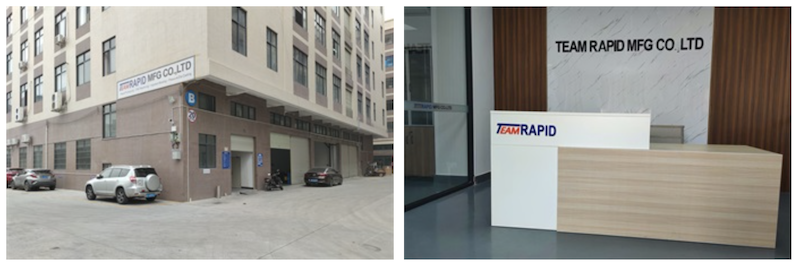
Can steel be Anodizing? The Conclusion
Even metals with great resisting corrosion like aluminum can experience wear and tear over time. Anodizing offers an economical way to boost the durability of aluminum alloys. However, steel anodizing can result in rust and other types of damage. While steel anodizing can be done in laboratory settings, it isn’t cost-effective for wide applications. Thus, industries prefer more practical surface treatments for steel, like passivation, electropolishing, and phosphatization, which are better suited for industrial purposes.
Contact us today for an instant quote to explore how TEAM Rapid Tooling, a CNC machining China partner, can assist in elevating your metal fabrication endeavors.
